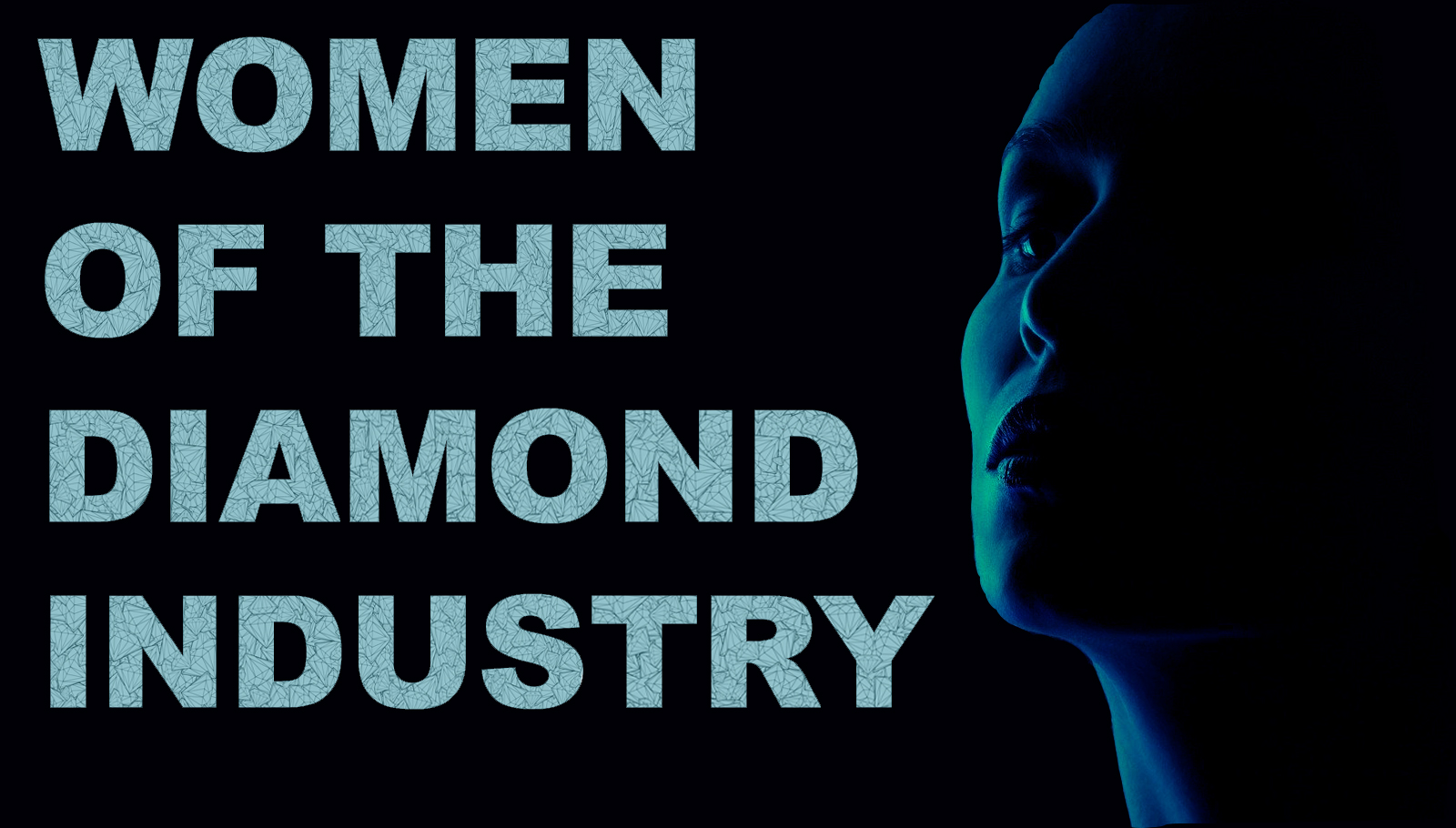
“Women of the Diamond Industry” focuses on the issue of gender equality along the entire diamond and jewelry supply chain. The series provides a platform for women in the industry to tell their own stories and describe the particular challenges they have faced in their careers.
The seventh article in the series is authored by Nirupa Bhatt, a gem and jewellery value chain expert, and a business coach and strategic advisor.
A career spanning continents,
seen through the prism of India
I have cherished my journey in this beautiful and challenging industry. And after experiencing it for more than three decades, I continue to enjoy connecting with the gift of Mother Earth – diamonds.
I find the story of diamonds intriguing. Formed billions of years ago and brought to the surface by earthquakes and volcanoes, where they are mined, jewelry designers and retailers then reach out passionately to present this magnificent gemstone to the women of this world. It is all so fascinating.
But, as my career attests, women are not only its consumers, but active participants in the industry as well. I have had the privilege of meeting and interacting with them – interesting entrepreneurs and professionals of the gem and jewelry industry value chain, from the mines to the retail outlets.
It remains an exceptional experience to visit a diamond mine. It is difficult to describe the wilderness, vastness, and ruggedness of the terrain you witness around them. It is simply breath-taking.
But the value chain that follows is also beguiling, as much for its diversity as for its intricate structure. This was reflected by each role I filled in the industry, which presented its own unique challenges and opportunities.
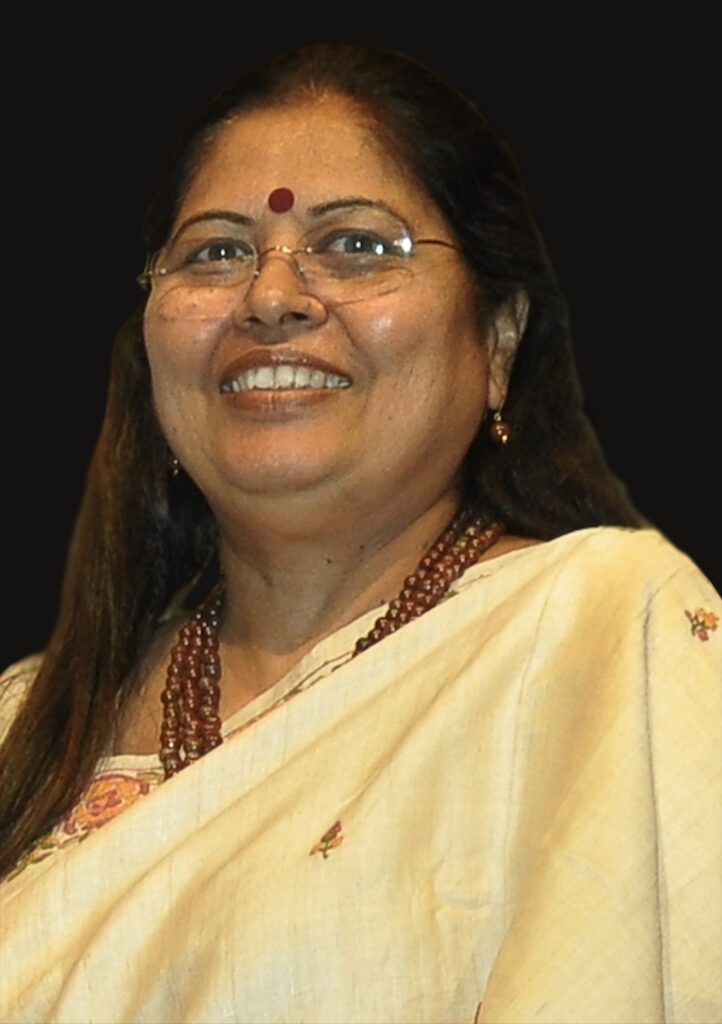
Nirupa Bhatt
The experience I gained from micro and small businesses proved to be a greatly important asset. Indeed, I believe that the success of the diamond industry is vested in the collaborative relationships along the full value chain, where smaller businesses and larger conglomerates rely upon each other’s contributions.
I certainly owe my success in the industry to the lessons I learned both from small business owners and the directors of multi-million-dollar national and global companies.
Rethinking the client-supplier paradigm
While the scope of my career has spanned continents, it has been seen mainly through the prism of the diamond industry in India, which over the years that I have been active developed into the world’s dominant production center.
A good deal of India’s growth, and my professional growth as well, can be traced to events that took place elsewhere, notably in Western Australia, with the discovery and development of the Argyle Mine, which in a short space of time became the world’s most prolific rough diamond producer.
Because of the unique mix of mainly colored diamonds it produced, the financial success of the Argyle venture depended on its ability to nurture working relationships in the Indian industry. In many respects, it needed to rethink the process by which diamonds are cut, polished and brought to the market. I was fortunate to have been able to play a part in that journey.
The years I spent with Argyle Diamonds, followed by Rio Tinto Diamonds, widened my horizons and introduced me to the three most significant stakeholders in the value chain – the miners, the cutting industry in India and the world’s largest consumer market, the United States.
Argyle redefined the concept of customer service in the mining sector, understanding that the conventional supplier-client paradigm needed to evolve into true partnerships for the greater good of the industry.
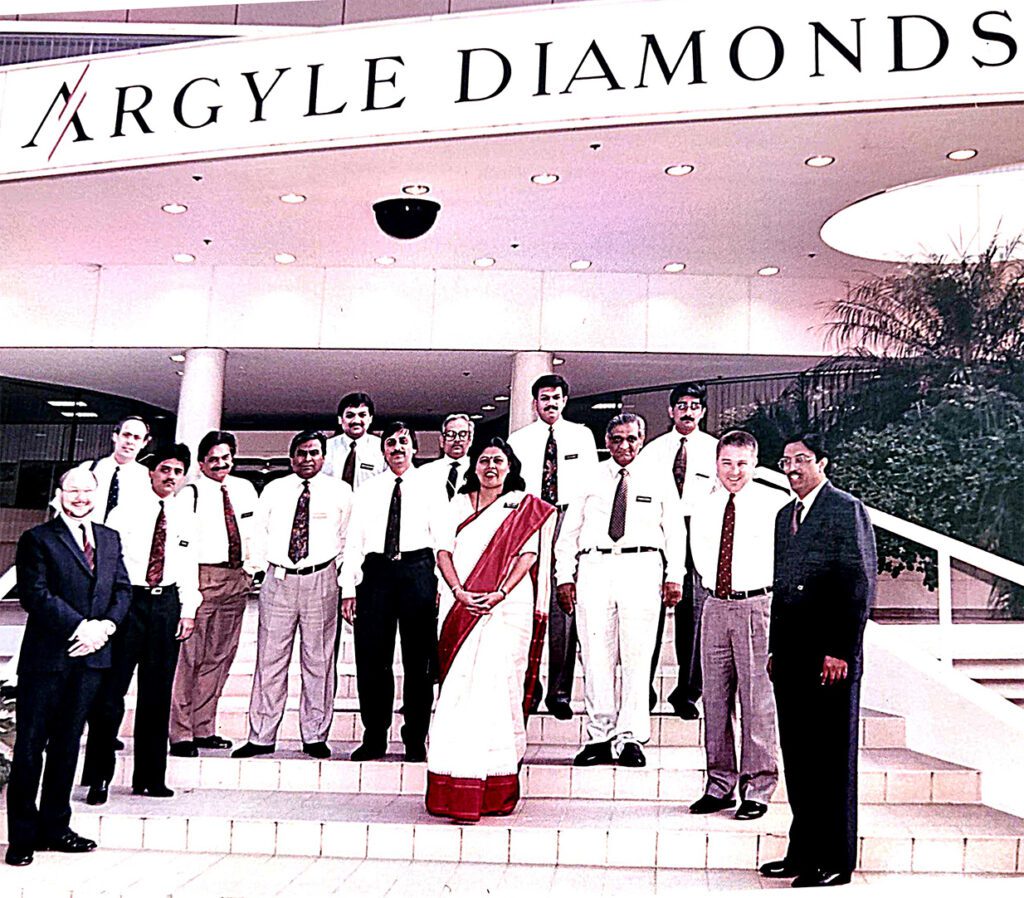
In 1992, Argyle Diamonds conducted its first customer conference, inviting a group of its clients to its corporate headquarters in Western Australia. Here, Nirupa Bhatt, who represented the company in India, stands with members of the delegation and Argyle executives, on the footsteps of the company’s offices in Perth.
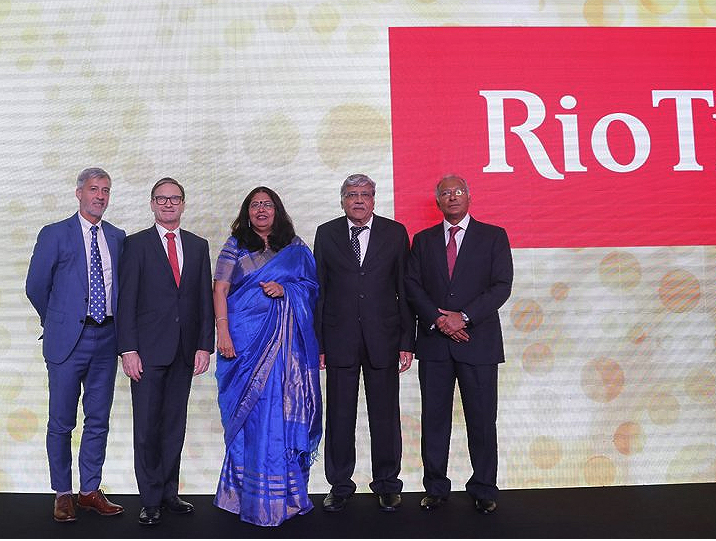
Nirupa Bhatt (center) celebrated the 30th anniversary of the Indo-Argyle partnership in Mumbai in July 2019. She is flanked (from left) by Alan Chirgwin, vice president sales and marketing, copper and diamonds, Rio Tinto; Tony Huber, Australian Consul General to India; Sanjay Kothari, former chairman of the GJEPC; and Vikram Merchant, director of diamonds sales and marketing in India, Rio Tinto.
While there, I learned both from my colleagues and managers that a market-directed approach is fundamental to strategic planning, as is the careful execution of a program by a team with focused leadership.
The Indo-Argyle Diamond Council, the marketing-oriented venture which was established to support Argyle and its partners, and in which I played a central role, proved to be a most effective platform, bridging the gap between Indian jewelry manufacturers and retailers in the consumer markets. I learned how to mentor and coach, helping the participants to attain their true potential.
A win-win proposition
From Argyle I shifted focus to the Gemological Institute of America (GIA), which offered me the opportunity of leading its effort to create a substantial grass-roots presence in India.
I am most proud of what we achieved, establishing GIA India from ground zero to an enterprise employing a workforce of more 1,200 people.
It was a win-win proposition, for GIA and for the Indian diamond industry. GIA was already the global leader in the gemology field, and to take that brand to greater heights required wholehearted commitment and effort.
GIA’s mission of ensuring public trust in gems and jewelry, through its research, education and laboratory services, reached across the length and breadth of India and the Middle East. I connected to people throughout the industry, from sales associates to business owners, while presenting seminars and delivering knowledge. It was very fulfilling.
I have great admiration and respect for the Indian diamond community and its people, and for what they achieved in establishing the country as a global cutting center. With most rough diamonds being processed in the country, I believe that we have earned our dominant position fairly.
India, today, is not only a production center, but a major diamond consumer in its own right. It currently is the world’s second largest importer of gold and the third largest consumer of diamonds. Over the past decade, I have established a network of manufacturers and retailers, all active in the domestic market.
Involving women in industry leadership
In recalling the journey of my career, I have focused thus far on the accomplishments of my country in the diamond industry, and less on the discussion about gender equality.
I do not for one moment discount the special challenges we face as women, but at the same time consider my achievements to be proof positive that there is no challenge that we should not be able to overcome. Although it took time for me to establish my credentials, once I had done so, I was accepted as an equally deserving member of the industry.
Ours is an industry of entrepreneurs, who to optimize their success need to be multitaskers. But women entrepreneurs are required do this better, with social and family responsibilities added to the range of roles they fill.
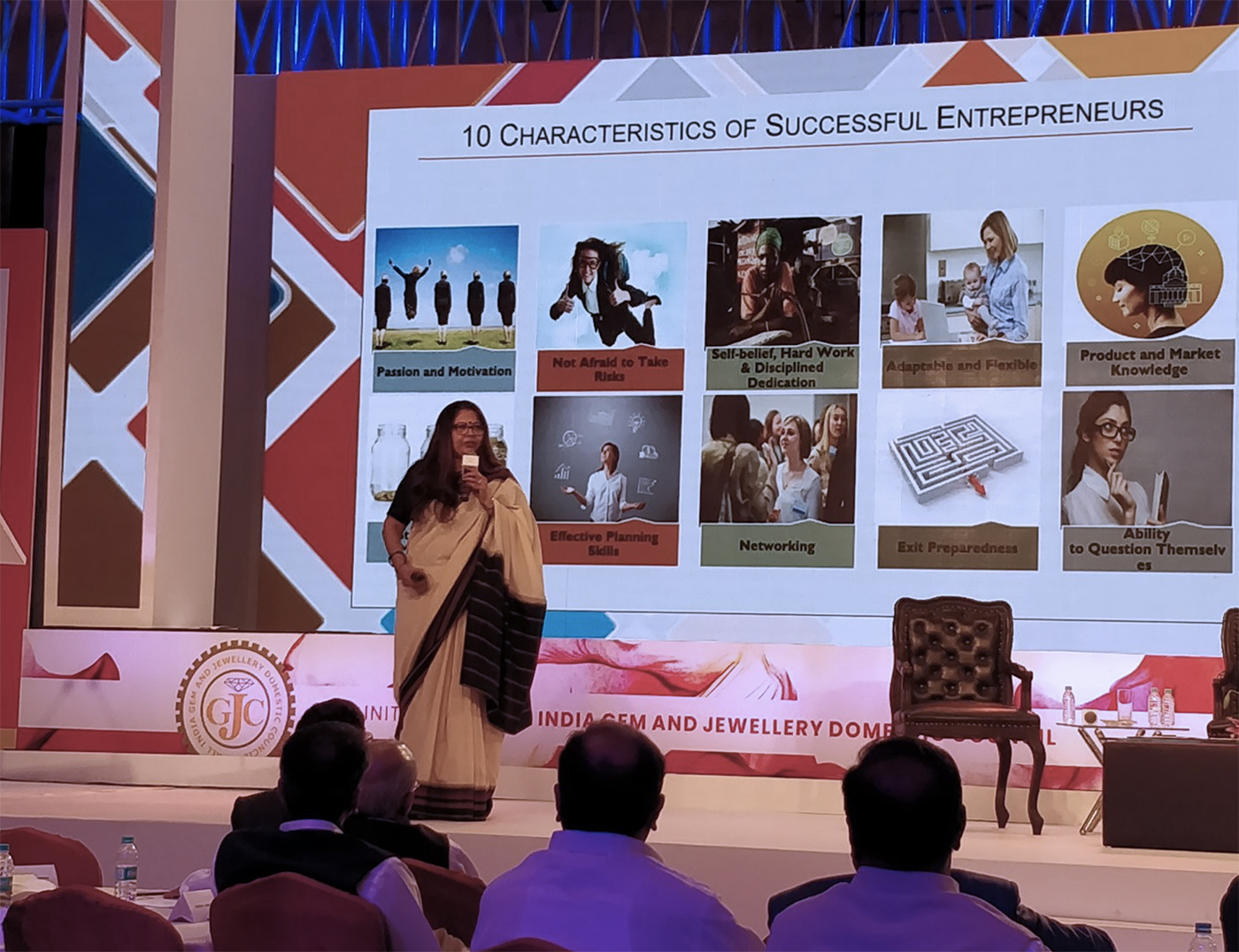
Nirupa Bhatt, addressing a seminar on female entrepreneurship organized by the India Gem and Jewellery Domestic Council in April 2018.
Women have a natural affinity for jewelry. Our industry survives and thrives because female consumers love our product. Common sense dictates that women need to be intricately involved in the development of diamond jewelry and the shopping experience. Involving women in our leadership will take the industry to greater heights.
I have witnessed an increasing determination by women to achieve their goals. I derive immense pleasure and pride when meeting women achievers, and have begun coaching women to set goals, helping create a path for their personal and business growth.
I would like to see an increasing presence of women on trade bodies. I try to lead by example, serving on various committees and boards of directors, including the Gem & Jewellery Export Promotion Council, where today I am an advisor, focusing on the educational needs of the industry, specifically where it comes to management and design.
I have been a member of the Women’s Jewelry Association (WJA) for many years, and through it have met colleagues who inspired me. Comradery builds confidence.
I strongly support the initiative of Responsible Jewellery Council (RJC) to form a Women’s Leadership Group. I am pleased to be part of this effort, in support of the goal to achieve gender equality in our industry.
Success is gender neutral
But ultimately, success is gender neutral. I have always thought of myself as a professional first and foremost. When I work, I focus my performance, objectives and deliverables.
Over the past two years, as a business and leadership coach, and advisor to firms active in the gem and jewelry business, the question of gender is not central. I urge my clients to remain focused on the scope of their work and its outcomes. Once you deliver results, people do not care whether you are a man or a woman.
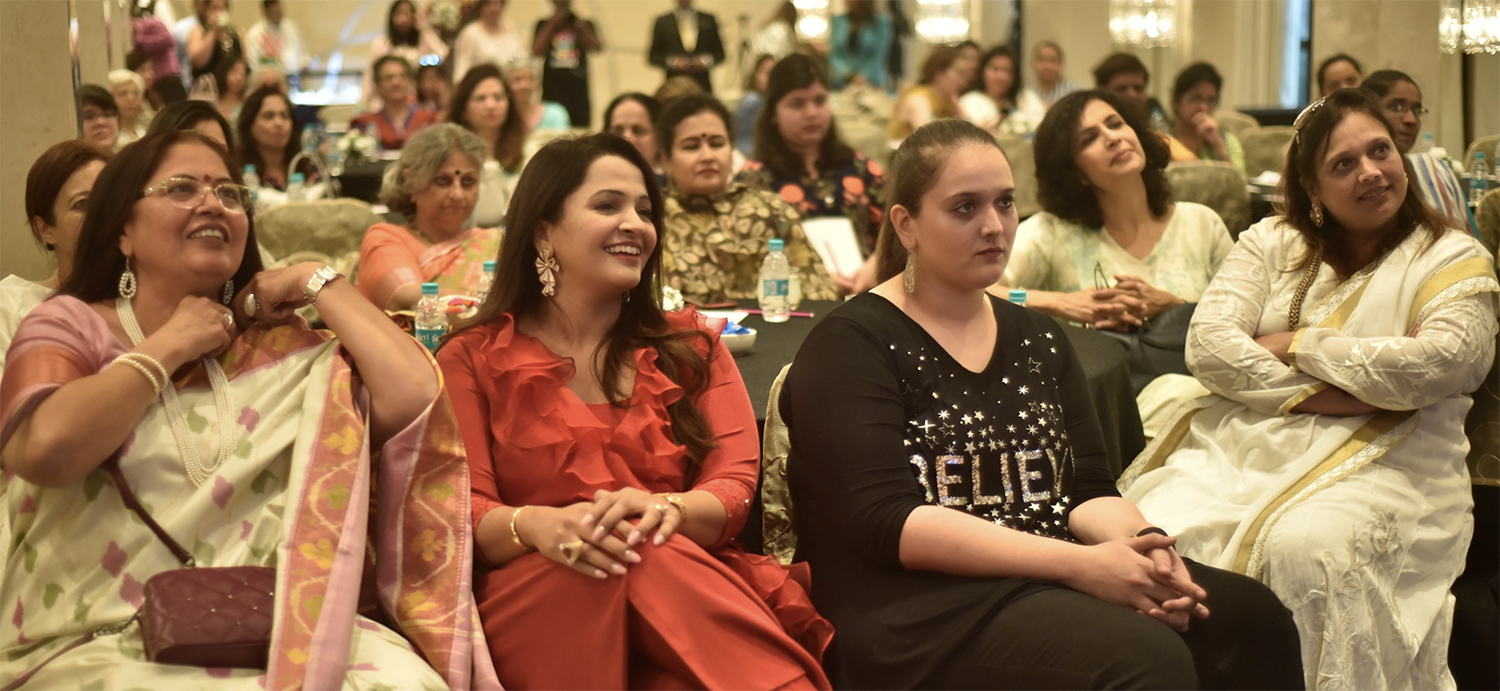
Encouraging the participation of young women in India’s industry, Nirupa Bhatt took part in a “A Date with Diamonds,” a knowledge seminar organized by GIA India, in May 2019.
I am not saying the playing field is level. But I believe that we have the power to make it so.
Gender inequality is not a biological imperative, but rather is a social phenomenon. In India and elsewhere, equality is a goal which remains to be achieved, but it is in our grasp.
My mojo can be found in the expressions “live your dreams, and “pursue your passion.” Let no one tell you not to try. Remember that failure is rarely fatal, and success is not necessarily final.






